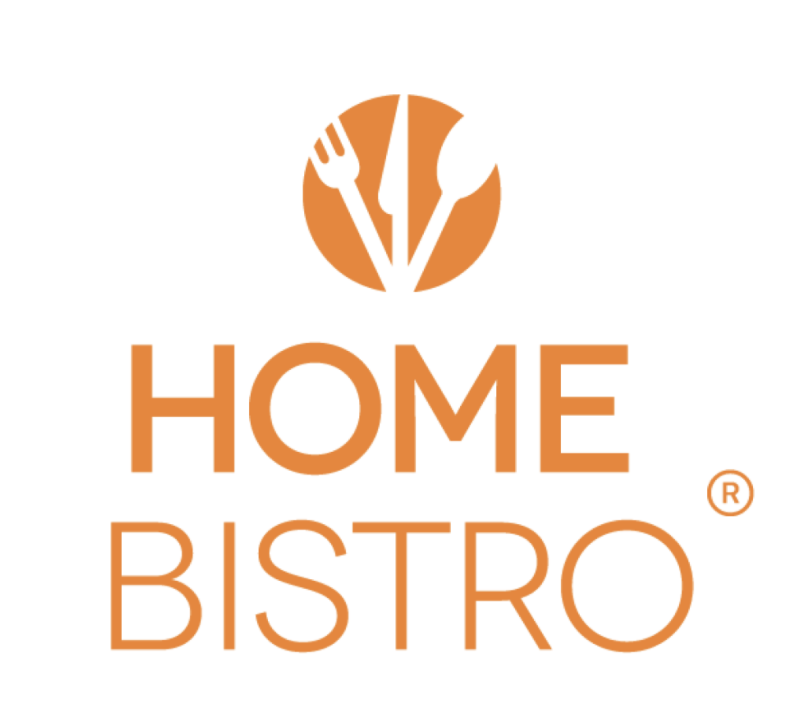A patient is not always driven to change their lifestyle behaviors. Engaging in that treatment plan is a vital part of healthcare and technology as well as an investment opportunity.
Today I’m following up on a previous post, fully devoting this conversation to the other side of health technology; consumer-direct health-tech is the kind that engages the patient in their own health. When the patient takes charge of their health and disease treatment regimen, interesting things can happen.
“Change Anything”, a book written by five men who founded VitalSmarts has also been a course licensed to corporations to help employees improve soft-skills. “Change Anything” addresses lifestyle behavior changes like smoking cessation or weight management and fitness. The phrase, “become the scientist and the subject,” is the basic premise of the Change Anything training.
Self-directed health technology is a huge market. In the US alone, just for weight loss, we spent $71 billion last year. [source: prnewswire] Health tech makes it possible for a person to take their data, and figure out their own best personalized healthcare solution.
The Case for Better Patient Engagement in Health Solutions
A man named Kelly gave me permission to share his story.
When he met his wife, he was straight out of Ft. Sill, Oklahoma Basic Training in field artillery, and could do hundreds of pushups with her on his back. With a strong baseline in high school and intramural college sports, he took for granted that he could eat whatever he wanted, even when he settled into a more sedentary lifestyle after marriage.
But after 30 years, his feet started burning. And then he lost significant muscle mass. Kelly was diagnosed with T2 Diabetes and he was miserable, scared and angry, mostly at himself. His grandfather had died from T2D; his father had T2D and three of his siblings had it. He’d been warned.
Disliking the side effects of diabetes medications (which he took anyway because they did provide some relief), and unwilling to give into shock marketing tactics of high priced pseudo-doctors who promised to reverse diabetes through coaching and supplementation; he went after this like a scientist and he was the research subject, just like the book Change Anything teaches.
Kelly’s previous number at diagnosis six months prior was 10.9 – and in case you haven’t had a doctor talk with you about a1C, which is a cumulative blood glucose score, that’s a terrible number.
After sticking to a high vegetable, low or no sugars and grains diet for 6 months, Kelly measured his a1C number expecting to see at least a drop to 7: but the meter said 10.6. He was furious. All that sacrifice only to fail.
Kelly built a spreadsheet and began gathering data like crazy. He also went on to incorporate wearable tech (Fitbit) and MyFitnessPal in his life to collect data. That way, when he tested a new lifestyle behavior, he could track effectiveness with real data. He tracked nutrition, movement, supplementation and sleep, and developed his own scoring system for results from all of the data he was collecting.
Two years later, and several “science experiments” later, his a1C is now 5.4 and blood glucose tests between 86 and 103, and is off most of the diabetes medications. He completed a half marathon as a winter storm blew in last November and continues to work hard on his health.
Turning Patients Into Scientists and Subjects
How do we turn more patients into scientists and engage in their own health and quality of life?
For the purposes of this article, I’m going to put consumer-direct health tech in the context of these three categories:
Wearable tech made by Fitbit, Samsung, Garmin, and Apple has potential to integrate data collection on patient behavior. Oura is an up and comer in the venture funding space, but the leaders are already publicly traded.
Mobile apps that actually engage someone in lifestyle behavior changes are difficult to create and typically gut the R&D budgets of well established companies and are also costly to maintain and stay competitive. One publicly traded company, UnderArmour has actually begun moving out of the tech space for this reason.
Top mobile health apps, according to Statista are Fitbit and MyFitnessPal. Both have free versions downloadable through the Apple Store and Google Play, and can be upgraded to a premium subscription service ranging from $5 to $9.99 per month. Fitbit is paired with a wrist device, but some people will use the app to track food and water, even though they might not have a device. Premium services take a deeper dive into meditation, sleep, and micronutrition. MyFitnessPal even tracks movement when you’re holding your phone as you walk.
Other popular apps include Headspace, Noom, HealthTap, Nudge, Fooducate, Happify and others. [source: Space Technologies]
Internet of Things (IoT) is a network of things we used to be familiar with as simple treadmills or bikes that are now embedded with sensors, software and technology. Some of these resources connect with expert coaches, physical therapists and trainers, scanners, and more. This is all to help the user get a great workout at home or even recover from injury without having to drive to the physical therapist’s office for help.
First I’ll talk about the private companies leading the field in health tech.
Private Companies
Hinge Health
Hinge has a direct to employer and consumer focused sales process, specializing in musculoskeletal medicine or MSK for short – (think hinges – knees, back, shoulders, hips, arms, etc.)
Hinge was founded by Daniel Perez, whose personal and family history of musculoskeletal injuries led him to pursue a PhD in biochemistry at the University of Oxford. He’s currently on leave as he builds Hinge Health.
Perez says, “We reduce MSK pain, opioid use, and surgeries by pairing advanced wearable technology with a comprehensive clinical care team, including doctors of physical therapy, physicians, board-certified health coaches, and more.
Available to millions of members, Hinge Health is the #1 Digital MSK Clinic for health plans and employers, including Boeing, Salesforce, and US Foods.”
Hinge combines specialists, therapists and health coaches in the digital space, using wearable technology that not only tracks movement but stimulates nerves to optimize healing and reduce re-injury.
Hinge’s most recent round of funding (Series D) was an influx of $300 Mil in January, 2021 with over $426 Mil total raised since its founding in 2015.
Tonal
Tonal is a smart home gym that uses artificial intelligence and coaching to provide strength training. Tonal in its simplest form, is a high tech weight machine that mounts into the wall that tracks your posture, and calibrates the weights for you. Machines sell for $3000 and up, and installation is included in the price. The product seems space-friendly compared to other weight machines. (consumer reviews express concern about damage and sound amplification) [source: producthunt.com]
Users report gamification to engage users, and the AI tests you in range-of-motion, weights and strengths scoring and pairs the weight being applied to the movement. There’s also a camera built into the device, but currently no connection to a live class at this time. [source: garage gym reviews]
Founder Aly Orady had struggled with his own health and weight from childhood. But as a busy Silicon Valley engineer (Samsung, Sun Microsystem, HP and 3 enterprise startups), noticed how much time the gym took out of his day, both in getting there and then waiting for the machines he wanted to use. Not wanting to give up his living, in order to have a healthy body, he tested electromagnetics to create electronic resistance, and then he patented the results. [source: techcrunch]
What about data? Top athletes track workouts through guided, custom and free lift workouts and can see their workout history so that they can adjust their workout or stay the course if their goal-directed habits are working for them. [source: Tonal]
Tonal appears in the top 5 venture-funded health-tech companies this year. [source: statista] They received $250 Mil in March, 2021 in their Series E round with total funding to date raching $450 Mil. The top investor for this round was Dragoneer Investment Group.
Noom
Noom is going head-to-head with WeightWatchers, leading with a high tech, DIY delivery through a mobile app that it launched in 2016. Because of its approach to engaging people in healthy lifestyles, it was well-positioned to step into the gyms-closed environment of 2020 and
doubled revenue over 2019, reporting $400 mil in 2020.
Noom began in 2007, and tested out with a connected bike and calorie counting app. But it wasn’t until 2017’s release of a more weight-loss focused app that incorporates goals-directed psychotherapy to help people understand emotional eating, compulsivity and consequences.
Noom recently raised $540 Mil in Series F funding. Some of their investors include Samsung Ventures, Silver Lake, Sequoia Capital, Oak HC/FT, Temasek, and Novo Holdings. And the startup is reportedly working with potential advisors to launch an IPO, estimating a valuation target of $10 Billion [source: Techcrunch]
Public Companies
I’ve mentioned a few established consumer-targeted health-tech companies already trading publicly. This is an opportunity to see the overall trend of the sector before investing in a private company.
Following your rules will keep you from chasing after a lot of bright shiny objects in the startup space.
Fitbit (FIT)
Fitbit launched in 2007 as an electronic pedometer. competing at the time with Garmin, Apple and Samsung. I’ve been wearing a Fitbit since June, 2014, and for the most part have collected data every day since then.
About a year ago, I upgraded to include heart monitoring. My son won’t wear one; he’s a data-purist and Fitbit isn’t accurate enough for his liking so he’s looking at an upstart in the space out of Finland called Oura. I’ve noticed similar accuracy challenges when I’ve been race-walking; the faster I go, the less steps it counts. But I’m an average kind of person, comparing workouts and sleep scores.
Fitbit’s success has come from connecting with huge retail distributors like Amazon and Costco, corporate partnerships where employers pay a share of the device cost, and direct to consumers.
They’ve evolved into an employer resource in education and accountability. Some health insurance companies have helped out in some cases by requiring healthy lifestyles programs for employers offering HSA plans.
One company has a quarterly step contest that integrates health tracking device data. It’s an opt-in contest so it complied with privacy issues, but was required in order to get HSA matching funds from the employer. This company rotates different activities throughout the year in health, fitness and wellbeing with incentives like paying fees for 5 and 10k races, half and full marathons, and triathlon events. If employees wanted to enter a race that built physical health, they could ask for sponsorship and very likely get it. The company also posts health education articles prominently throughout the facility and emails health tips regularly.
Google acquired Fitbit in January, 2021 for $2.1 Billion, though concerns about privacy have attracted the attention of the Justice Department, and Google has promised that users’ health and wellness data won’t be used for targeted ads.[sources: Wikipedia, fiercehealthcare.com and Google]
Under Armour (UAA)
Under Armour began as an apparel company founded in 1996 by Kevin Plank who played special teams for University of Maryland football. He was 24 years old at the time, making team apparel prototypes in his grandmother’s basement. The big problem he was trying to solve was uncomfortable, sweaty workout clothing. He was going up against big names like Nike, Adidas and Reebok, but his college buddies who went on to the NFL wore his gear instead of the big brands.
In 2013 the company began acquiring fitness apps like MapMyFitness, Endomondo, and MyFitness Pal.
But in November, 2020, Under Armour began retreating from the fitness app category by selling MyFitnessPal to Francisco Partners. There are more than 200 million MyFitnessPal users. Speculation as to the reasons behind the move includes Nike’s Training Club and Nike Run Club apps, Apple’s launch of Fitness+ and Peloton’s dominance. And Under Armour also had a 41% decline Q2 2020 compared to Q2 2019. [source: marketingdrive.com]
Peloton (PTON)
While Peloton is mostly known for the bike, it’s the community that’s attracting purchasers; over 5 million members.
I remember my first spin class. My legs argued with me about taking the stairs after. The music, the trainer and the fellow “racers” kept me going at a pace that really gave “legs day” at the gym a bad name.
The first time I heard of internet-interfaced exercise equipment was iFit, also known as ICON, a company started in Logan, Utah – a small town about 90 miles north of Salt Lake City. ICON bought several other exercise equipment companies like NordicTrack, ProForm and Healthrider. In fact, the Healthrider treadmill I bought in 2001 had an iFit interface, but I never learned how to use it.
Peloton is both a purchase and a subscription. The device itself is a $2700 stationary bike with technology integrated to create resistance which takes it out of the pure cardio workout. Purchasers can then subscribe to a monthly membership service for about $40/month – in essence, you’re paying $500 extra a year for the membership to something you already own.
Members can choose between beginner-to-expert levels of classes, and music genres. My bike-friends who use Peloton like the competition, and the new feature just launched last month (July, 2021) called Lanebreak, which features obstacles and other reality enhancements to the virtual race experience.
Classes are live and on-demand. Subscribers aren’t locked into the competition feel for every workout though; they can take scenic rides throughout the world. While it doesn’t come with a virtual reality headset (yet), it’s nice to not just stare at a wall until your timer goes off and your cardio workout is done. There are other companies in the internet-interfaced equipment space, but so far the workout content keeps people coming back for upgrades and paying the monthly subscription.
Peloton came into that space with an upgraded interface, and took it to the next level, beginning in 2012, after founder John Foley took the start up into its seed round of funding and raised $400,000. The company launched its initial public offering in September 2019 with a valuation of $4 Billion.
Bottom Line
Too often, if tech doesn’t rise to the engagement threshold, that $2700 bike becomes a very expensive clothes rack. The data drives downstream uncaptured, and the user doesn’t notice data that could make all the difference in the battle for better health, injury prevention and disease prevention.
When I was in grade school, there was a futuristic film that had the virtual doctor taking weights and measures every morning, dictating diet and exercise and activities for the day. With companies like Tonal and Fitbit (which now has a field for users to enter blood glucose testing results), Peloton and others, that future is almost here.






1 Comments
I’m impressed, I must say. Seldom do I come across a blog that’s equally educative and amusing, and
let me tell you, you’ve hit the nail on the head.
The issue is something that too few people are speaking intelligently about.
I’m very happy I came across this during my hunt for something
concerning this.